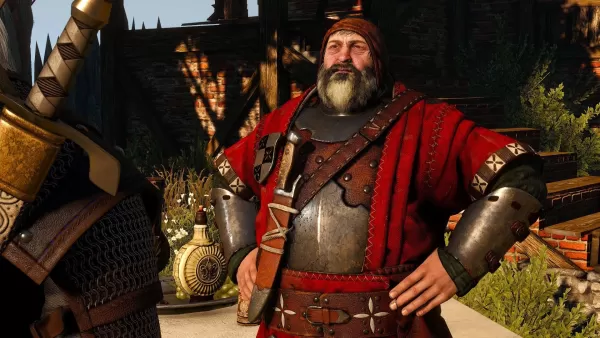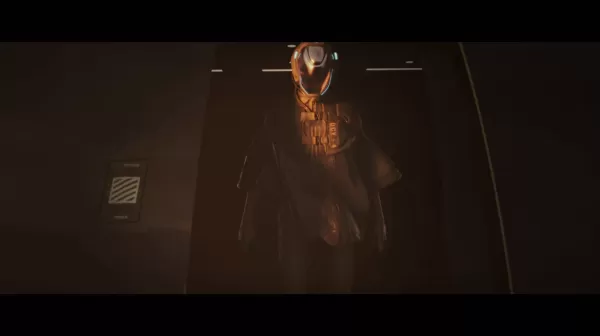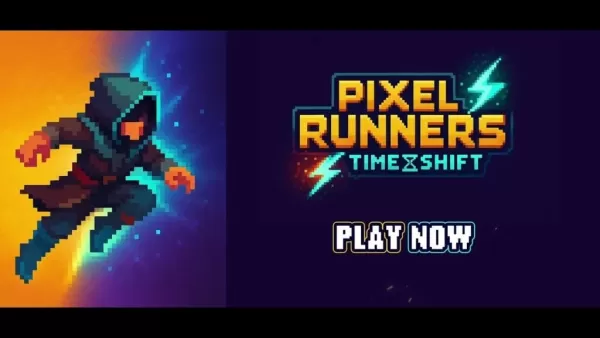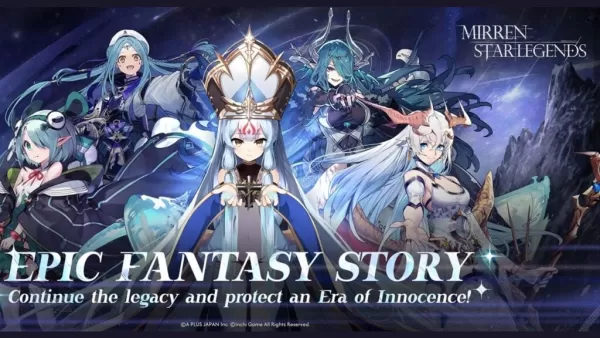by Eric May 22,2025
CD Projekt Red has carved out a unique niche in the gaming industry, primarily through its dedication to crafting immersive and impactful role-playing games (RPGs). The studio's reputation was solidified with the release of The Witcher 3: Wild Hunt, which, even a decade after its release, is often hailed as one of the greatest RPGs of all time. Similarly, Cyberpunk 2077, after significant updates, has evolved into a deep and robust open-world experience. These titles, along with other intriguing releases, have established CD Projekt Red as a revered name in gaming. But what sets their games apart?
The secret to CD Projekt Red's success lies in the intricate interplay of smaller elements that coalesce into a seamless and believable whole. This authenticity is achieved through dynamic stories, worlds, and characters that evolve based on player choices. Although this is a common template in RPGs, CD Projekt Red excels in executing these ambitions in a way that few others have.
Patrick Mills, the franchise content strategy lead at CD Projekt Red, highlights the importance of tools in realizing these ambitions. "When I play other triple-A RPGs or RPG adjacent games, I very often can feel the limitations of their tools," he explains. "You can see the ambition of the designer and you see that the ambition is not quite delivered upon. And I think a lot of people who don't know how games are made look at that and they just say, ‘lazy devs,’ or ‘they're bad designers.’ And that's not what it is. I think, a lot of times, it's that your tools just aren't capable of delivering the thing that you want to do."
 The Witcher 3's Bloody Baron story arc features hidden choices that can result in tragic outcomes. | Image credit: CD Projekt Red
The Witcher 3's Bloody Baron story arc features hidden choices that can result in tragic outcomes. | Image credit: CD Projekt Red
CD Projekt Red has invested heavily in its own tools, particularly the REDengine, which has been refined over four iterations to meet the studio's specific needs. This engine has enabled the seamless integration of game elements, making player actions feel significant and well-accounted for. The evolution of REDengine has also allowed for more ambitious quest designs. In The Witcher, quests often involve exploration, dialogue, and combat. By Cyberpunk 2077, the studio had expanded its focus to include character creation and diverse playstyles like stealth and hacking, further diversified in the Phantom Liberty expansion, which introduced genre-blending quests.
Miles Tost, the level design lead, emphasizes the importance of variety in gameplay to prevent player burnout. "I think especially with the RPGs that we're making, which tend to be relatively sizable, it's almost like a necessity, right?" he says. "You need to find the variety in the gameplay and ways to bend the systems in a way that you create some new and fresh experiences, because otherwise players will just burn out on it."
Storytelling is another cornerstone of CD Projekt Red's games. Every quest is designed with a twist to keep narratives engaging. Mills explains that a simple task like killing bandits can be made interesting through unexpected developments. To ensure quests can handle varied player approaches, CD Projekt Red conducts "destruction testing," where playtesters explore missions in every possible way. This data helps designers adjust quests to accommodate different player behaviors, resulting in more natural and responsive storylines.
Choices in CD Projekt Red's games are renowned for their complexity and impact. Unlike straightforward good vs. evil decisions, choices in Cyberpunk 2077 and The Witcher series are nuanced, with delayed consequences that enhance authenticity. Paweł Sasko, associate game director, notes, "All the sides are presented to you beforehand. You had an opportunity to actually assimilate all the information. You understood it well, you get the characters, you know what they are about. So at the moment when you are faced with a choice, you understand the context and you understand the implications of what you're doing."
 The finale of Phantom Liberty allows you to help or betray Songbird. | Image credit: CD Projekt Red
The finale of Phantom Liberty allows you to help or betray Songbird. | Image credit: CD Projekt Red
A prime example of this nuanced approach is found in Cyberpunk 2077's Phantom Liberty expansion, where players must choose between helping FIA agent Songbird escape or aiding her former partner Reed in bringing her back to custody. These choices reflect the game's theme of moral ambiguity and allow players to forge authentic relationships based on their values.
Sebastian Kalemba, game director on The Witcher 4, emphasizes the emotional reward players should feel from their choices, even if the outcome is sadness. "Whatever the choice is and whatever the consequence is, we want players to feel rewarded, even if the emotion in the end is sadness," he states. "If this is coherent with the emotional journey we're delivering, [it will allow] the player to feel [that they are] okay with this consequence."
CD Projekt Red's most ambitious choice-driven moment came in The Witcher 2, where players' alliances at the end of Chapter 1 drastically alter the game's middle act. Tost reflects on the resource intensity of such decisions: "The difficulty with that is not so much about being bold, it’s mostly about the resources you invest. We haven't gotten more afraid over the years of people missing our content. We're very much fine with that happening. But it's also the amount of resources you commit to basically making two different stories, which is almost like two different games."
 Siding with Iorweth and the Scoia'tael in The Witcher 2 results in a very different version of Act 2 than if you'd allied with Vernon Roche. | Image credit: CD Projekt Red
Siding with Iorweth and the Scoia'tael in The Witcher 2 results in a very different version of Act 2 than if you'd allied with Vernon Roche. | Image credit: CD Projekt Red
The shift to open-world design in subsequent games made such branching pathways more challenging, but CD Projekt Red continued to innovate. The Blood and Wine expansion of The Witcher 3 and Phantom Liberty in Cyberpunk 2077 both feature significant branching paths. Tost notes that Phantom Liberty was a response to feedback about the base game's linearity, aiming to restore the sense of player agency.
Mills admits that the initial approach to choice and consequence in Cyberpunk 2077 was too subtle. "We built choice and consequence into most of our quests. We built it into the structure of the game, but it just didn't feel satisfying." The team learned that players often missed subtle cues in the game's detailed environment and that consequences needed to be more clearly presented.
Sasko discusses the The Pickup quest in Cyberpunk 2077, where players must retrieve a robot from a gang. The quest's outcomes reflect the player's choices, but many players miss these consequences because they don't revisit the location. "The learning [is that] the structure of the game needs to support [revealing the consequences]," he says, leading to a more overt approach in Phantom Liberty.
Ultimately, the success of choices hinges on the quality of writing and character development. Paweł Gąska, quest designer, explains, "As quest designers, we can think of good choices, good dilemmas, good themes, but it's the writers who have to deliver the dialogues that will actually elicit emotions in the players. It's the cinematics [team] and the animators who have to give [the story] to you in a way that you will actually feel it."
Kalemba underscores the studio's approach to player agency: "Our approach is the approach for the way we live, right? You don’t know what's going to happen tomorrow, but there are several choices you have today. And by designing the experience from the get-go this way, we let ourselves do our games as best as possible and ask players to be open and ready for the consequences."
As CD Projekt Red moves forward with The Witcher 4, the studio faces new challenges, particularly with the shift to Unreal Engine 5. Tost notes that working on expansions has been more enjoyable due to the clarity of direction, suggesting a need to streamline the development process to achieve similar results earlier in production. Kalemba's vision for The Witcher 4 is to enhance player agency, providing more tools and opportunities for players to shape their experience.
The challenge for The Witcher 4 is not just to match the achievements of The Witcher 3 but to evolve beyond them. As Cyberpunk 2077 demonstrated, even a studio known for its branching narratives can stumble, but Phantom Liberty showed resilience and growth. The true test will be how CD Projekt Red applies these learnings to The Witcher 4, hopefully continuing to cement its reputation for respecting and fulfilling player choices.
Forsaken Characters Ranked: Tier List Update 2025
How to Use Cheats in Balatro (Debug Menu Guide)
State of Play Reveals Exciting Updates: PlayStation February 2025 Showcase
Infinity Nikki – All Working Redeem Codes January 2025
Roblox: Obtain Secret Codes for January 2025 (Updated)
Pokémon GO Raids in January 2025
Wuthering Waves: Redeem Codes for January 2025 Released!
LEGO Ninjago Sets Top the Charts (2025)

2024 Perfect Dark Demo Mostly Real, Dev Confirms
Dec 27,2025

Pixel Runners: Time Shift Now on Android
Dec 27,2025
Nintendo Switch 2 Secondhand Buyers Warned of Anti-Piracy Bricks
Dec 27,2025

Madoka Magica Magia Exedra adds 5-star Kioku Holy Mami
Dec 26,2025

A Plus Japan, Crunchyroll Unveil Mirren: Star Legends (Note: "on Android" was removed to keep within 50 characters while maintaining key info.)
Dec 26,2025